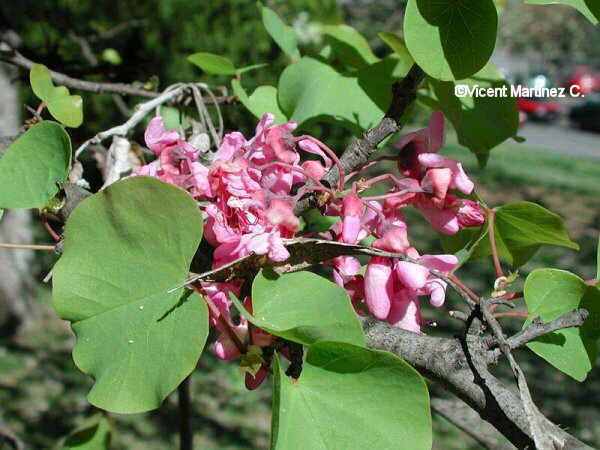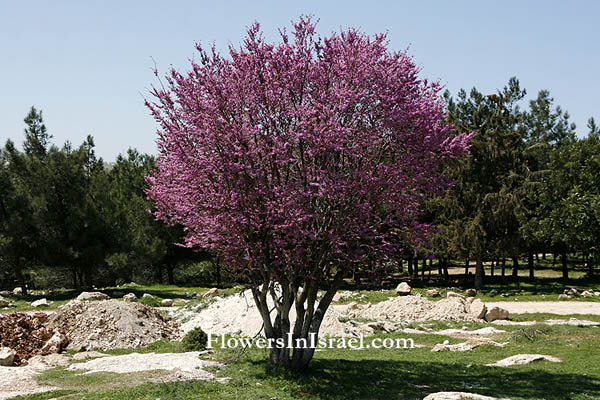Cercis siliquastrum
Judas tree ( Cercis siliquastum )
The Ordinary Judas tree ( Cercis siliquastrum ), also briefly called Judas tree, is a species of the genus of the Judas trees ( Cercis ) in the legume family ( Fabaceae ). It is native to Southern Europe and Western Asia, and is used as an ornamental plant.
- 6.1 Notes and references
Description
Appearance and leaf
The Ordinary Judas tree grows as a deciduous, large shrub or small tree, reaching heights of growth 4-8, more rarely 10 to 13 meters.
The alternate arranged leaves are stalked. The simple, bare leaf blade is kidney-shaped with a diameter of up to 13 cm, often broader than long and entire. The fresh leaf shoots is often still bronze and autumn color is yellow. The small stipules fall off early.
Inflorescence and flower
The Judas tree is one of the few woody plants occurring in Europe, where the inflorescences emerge on older stem parts ( cauliflory ), they appear before the leaves on perennial wood. The short racemose inflorescences contain only three to six flowers. The outer leaves are scale-like. The hermaphrodite flowers are zygomorphic and fünfzählig double perianth. The five sepals are bell-shaped fused with five equal calyx teeth. The five purple - pink petals form a 1.2 to 1.5 cm long crown, which is only butterfly flowers only similar, but a different structure. There are ten free stamens present. All anthers are equal. The only carpel contains many ovules. The stylus is thin. Pollination is by bees, for example.
Fruit and seeds
The legume opening two flaps with a length of 7.5 to 9.5 cm and a width of 1.7 to 1.8 cm - linear elongate and flattened; the upper seam is narrow winged. The legume contains many inverted egg-shaped seeds.
Occurrence
The natural extension of the ordinary Judas tree extends over Mediterranean countries in southern Europe and the Near East.
The Ordinary Judas tree prefers calcareous soils and altitudes below 400 meters. He preferred location sparse forests, but also occurs in shrub form as pioneer vegetation on stony soils.
Use
The Ordinary Judas tree is used as ornamental tree. There are known several cultivated forms: 'Alba' with white flowers, ' Bodnant ' with dark pink flowers and ' Rubra ' with dark red flowers (selection).
The very hard wood is used for its beautiful grain as plywood.
The flowers can be eaten raw and are a sweet and sour enrichment and decoration for any salad. The flower buds are sour pickled and used as a spice. It is reported that the pulses to be eaten raw.
Origin of the name
The name Judas tree is rooted in the legend, Judas Iscariot had to such a tree hanged (Mt 27.3 to 5 EU). According to a story in the Mediterranean, the tree was red with shame thereto under way (see pink flowers ). In addition to this you can see the round leaves which are formed only during flowering, than watch the Judas paid for his betrayal pieces of silver.
Taxonomy
The first publication was in 1753 by Linnaeus in Species Plantarum, 1, p 374
Swell
- S. I. Ali: Caesalpiniaceae. In: Flora of Pakistan. Volume 54: Cercis siliquastrum - Online. ( Description section )










